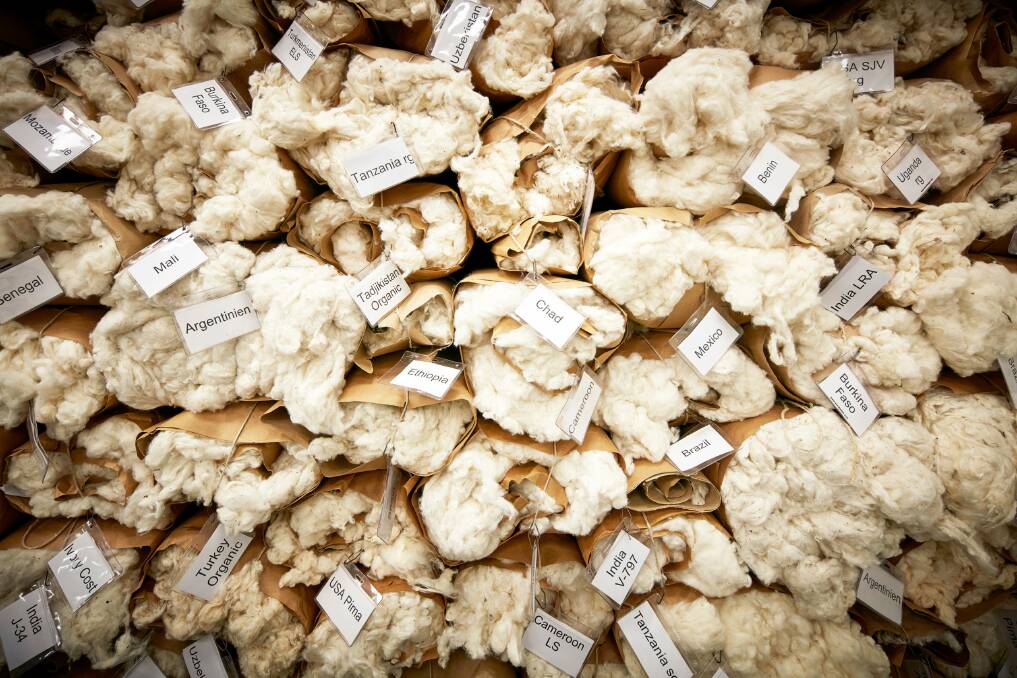
Long-time market enemies, the wool and cotton industries are looking to join forces globally to take on synthetic fibres.
Subscribe now for unlimited access to all our agricultural news
across the nation
or signup to continue reading
Wool and cotton believe they both have the same eco-friendly credentials to challenge for better environmental ratings in Europe.
They want to form an alliance to champion the benefits of natural fibres as offering many solutions to the world's current environmental challenges.
A wool industry leader entered uncharted waters when invited to speak to an international cotton conference in Bremen last week.
More than 450 people from 32 countries attended the conference, which brings together cotton and other textile specialists from around the world.
International Wool Textile Organisation secretary general Dalena White spoke at the panel for Responsible Fibre Production, chaired by Cotton Incorporated senior vice president Mark Messura.
Ms White said under current ratings systems, products made from wool and cotton are at risk of being rated poorly compared to synthetics.
The rating rules to be applied to textiles, designed largely by the European Commission, result in all-natural fibres being rated as less sustainable than synthetic fibres.
Under these systems:
- Renewable and biodegradable fibres do not receive any positive scoring
- Petroleum based fibres receive no penalties for being non-renewable and nonbiodegradable.
- Microplastic pollution does not carry any negative scoring.
Natural fibres are fully costed for the environmental impacts of growing the plants that lead to fibre formation (including use of the land, water and energy used, greenhouse gas emissions).
Under this rating system, the environmental impacts of growing the plants that ultimately form crude oil used to make synthetic fibres are not accounted for.
Australian Wool Innovation program manager, fibre advocacy and eco credentials, Angus Ireland said AWI and IWTO are coordinating closely on this initiative and we are planning a much broader collaboration than just the wool and cotton industries.
"All natural fibre industries, including plant and animal fibres are at risk of being harmed if the EU PEF labelling scheme proceeds without improvement. So our intent is to form a natural fibre coalition and we have already commenced discussions with the international bodies representing these other fibre types," Mr Ireland said.
"The EU is currently in its consultative stage on textiles, so we will be taking every opportunity to do so across the course of 2021, including providing feedback on the Sustainable Products Initiative."
Ms White said a level playing field is not possible between clothing made from natural and synthetic fibres without improvements to the EC's rating rules, which is where the alliance between cotton and wool is seen as important.
The skewed rating system means brand purchasing managers would look for alternative fibres with 'better' ratings.

Ratings that don't reward the attributes of natural raw materials and doesn't penalise key environmental impacts of fossil fuel-based raw materials will mean demand for wool and cotton would fall, the conference was told.
"To establish responsible textile and fibre production standards for the future, we will have to face the elephant in the room: our addiction to fast fashion," Ms White said.
"This highly lucrative business model, enabled by the massive growth in fossil fuel-based fibres turned into low quality garments by the lowest labour rate available for the season, has been dominating our industry for the past 30 years, resulting in opaque supply chains.
"Responsible fibre production systems of the future must include responsible fibre consumption."
Unlike fossil fuel-based fibres, wool and cotton are indefinitely renewable, they can be grown again year after year.
At the end of life, these fibre types can be used again, with wool valued for closed-loop recycling and ultimately, when the fibre is exhausted and no longer suitable for clothing, it is valued in insulation and bedding.
Similarly, cotton fabric is valued for recycling because of its hydrophilic, moisture absorbent nature.
Research has established that wool fibres biodegrade in both marine and terrestrial environments and do not contribute to microfibre pollution.
Last year, IWTO published research showing wool garments have less impact in the use phase because they are laundered less often than other fibre types and are kept in active use by consumers for longer.
Prof. Thomas Schneider, University of Applied Sciences for Technology and Economics (Berlin), said: "We have seen that cotton is indispensable for the future because of its properties as a natural, innovative, renewable, biodegradable, and recyclable raw material.
"The possibilities of its use go far beyond processing into clothing and are far from exhausted from the point of view of research," he said.
These scoring systems would see cotton, silk, wool, and other valued animal fibres relegated to the ranks of the unsustainable throughout the production cycle and ultimately at point of sale, the conference was told.
The European Union has targeted the textiles industry as a priority sector for establishing sustainability standards, in order to achieve climate neutrality.
Clothing and textile products sold in the EU may soon be required to carry labels displaying their environmental credentials.
The Sustainable Products initiative, which will propose legislation aimed at making products sold in the EU more sustainable, is open for public consultation until June 9 with questionnaire at ec.europa.eu.
Start the day with all the big news in agriculture! Sign up below to receive our daily Farmonline newsletter.


